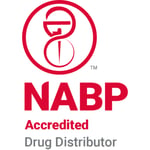In the ever-changing hospital pharmacy environment, regulatory bodies and industry organizations like the Federal Drug Administration (FDA), American Society of Health-System Pharmacists (ASHP), United States Pharmacopeia (USP) and Institute For Safe Medication Practices (ISMP) are making an effort to standardize guidelines for barcoding, unit-dose packaging and expiration dating. Clear standards of practice have shown reduced medication errors resulting in improved patient safety.
In the future, hospital pharmacies will need to implement changes to their operations in order to comply with new regulations and guidance related to pharmacy practice, sterile and non-sterile compounding, unit-dose repackaging and expiration dating.
Is your pharmacy ready to meet FDA unit-dose repackaging guidelines?
In 2017, the FDA released draft guidance for proposed changes in pharmacy unit-dose repackaging expiration dating requirements. As the landscape continues to evolve and new regulations are put in place, it's critical for your pharmacy to remain compliant. The FDA finalized this guidance in July 2020 for FDA registered re-packagers and expects to issue a draft guidance for hospital pharmacies in the near future.
To ensure you're ready to meet upcoming FDA unit-dose repackaging guidances, consider the following questions:
- Do you have stability studies to justify your expiration dating (beyond-use date) on repackaged drugs?
- FDA July 2020 Guidance states six months dating (or 25% of the remaining manufacturer expiration date, whichever is less) in the absence of a risk-based approach to stability studies for oral solids.
- The FDA has not given any guidance on allowable expiration dating for repackaged oral liquids.
- Do you know what class of packaging materials you use?
- USP Class A materials can support one year dating with stability studies.
- USP Class B materials can only support six months dating.
- USP Class D materials can only support 30 days dating.
- Does your pharmacy’s unit-dose packaging process comply with current good manufacturing practice requirements?
- Proposed FDA guidelines ensure packaging and dating consistency regardless of location.
- Cleaning validation to prevent cross-contamination.
- Did you know? Many high-speed oral solid packagers use a common chute resulting in a high chance of cross-contamination among drugs dispensed.
- Packaging materials should comply with FDA guidelines for water vapor and light transmission.
- Canisters in packaging machines should be proven as capable to protect the stability of the product while in storage. Canisters would be considered a container closure system and comply with USP requirements for light resistance and water vapor transmission.
- Do you have a separate quality team overseeing your packaging operation?
If you answered "no" or "I'm not sure" to any of those questions, new regulations could end up negatively impacting your budget and operations.
DOWNLOAD THE FULL FDA COMPLIANCE CHECKLIST
How to Make Your Pharmacy Compliant with FDA Requirements
While staying up-to-date and introducing new processes to your pharmacy can be challenging and costly, Safecor Health is here to help.
With our free eBook, you’ll learn what’s needed to become compliant with the FDA, including requirements around:
- Stability studies and expiration dating
- Quality control
- Cross-contamination prevention
- Employee training and standard operating procedures
- Packaging materials
- Labeling and barcoding
- Hazardous medication handling
- and more...
As a leading FDA-registered pharmaceutical packager, manufacturer and distributor, Safecor Health helps hundreds of hospitals and health systems save money and operate efficiently, allowing them to focus on patient care, medication safety and quality.
Contact us today to learn how Safecor Health can help.



